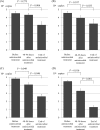Therapeutic efficacy of macrolides, minocycline, and tosufloxacin against macrolide-resistant Mycoplasma pneumoniae pneumonia in pediatric patients
- PMID: 23459497
- PMCID: PMC3632908
- DOI: 10.1128/AAC.00048-13
Therapeutic efficacy of macrolides, minocycline, and tosufloxacin against macrolide-resistant Mycoplasma pneumoniae pneumonia in pediatric patients
Abstract
The importance of macrolide-resistant (MR) Mycoplasma pneumoniae has become much more apparent in the past decade. We investigated differences in the therapeutic efficacies of macrolides, minocycline, and tosufloxacin against MR M. pneumoniae. A total of 188 children with M. pneumoniae pneumonia confirmed by culture and PCR were analyzed. Of these, 150 patients had a strain with an MR gene and 134 had one with an A-to-G mutation at position 2063 of M. pneumoniae 23S rRNA domain V. Azithromycin (n = 27), clarithromycin (n = 23), tosufloxacin (n = 62), or minocycline (n = 38) was used for definitive treatment of patients with MR M. pneumoniae. Defervescence within 48 h after the initiation of antibiotic therapy was observed in 41% of the patients in the azithromycin group, 48% of those in the clarithromycin group, 69% of those in the tosufloxacin group, and 87% of those in the minocycline group. The average number of days of fever after the administration of antibiotic treatment was lower in the minocycline and tosufloxacin groups than in the macrolide groups. The decrease in the M. pneumoniae burden, as estimated by the number of DNA copies, after 48 to 96 h of treatment was more rapid in patients receiving minocycline (P = 0.016) than in those receiving tosufloxacin (P = 0.049), azithromycin (P = 0.273), or clarithromycin (P = 0.107). We found that the clinical and bacteriological efficacies of macrolides against MR M. pneumoniae pneumonia was low. Our results indicated that minocycline rather than tosufloxacin can be considered the first-choice drug for the treatment of M. pneumoniae pneumonia in children aged ≥ 8 years.
Figures


References
-
- Okazaki N, Narita M, Yamada S, Izumikawa K, Umetsu M, Kenri T, Sasaki Y, Arakawa Y, Sasaki T. 2001. Characteristics of macrolide-resistant Mycoplasma pneumoniae strains isolated from patients and induced with erythromycin in vitro. Microbiol. Immunol. 45:617–620 - PubMed
-
- Matsuoka M, Narita M, Okazaki N, Ohya NH, Yamazaki T, Ouchi K, Suzuki I, Andoh T, Kenri T, Sasaki Y, Horino A, Shintani M, Arakawa Y, Sasaki T. 2004. Characterization and molecular analysis of macrolide-resistant Mycoplasma pneumoniae clinical isolates obtained in Japan. Antimicrob. Agents Chemother. 48:4624–4630 - PMC - PubMed
-
- Morozumi M, Iwata S, Hasegawa K, Chiba N, Takayanagi R, Matsubara K, Nakayama E, Sunagawa K, Ubukata K, the Acute Respiratory Diseases Study Group 2008. Increased macrolide resistance of Mycoplasma pneumoniae in pediatric patients with community-acquired pneumonia. Antimicrob. Agents Chemother. 52:348–350 - PMC - PubMed
-
- Morozumi M, Takahashi T, Ubukata K. 2010. Macrolide-resistant Mycoplasma pneumoniae: characteristics of isolates and clinical aspects of community-acquired pneumonia. J. Infect. Chemother. 16:78–86 - PubMed
-
- Miyashita N, Kawai Y, Akaike H, Ouchi K, Hayashi T, Kurihara T, Okimoto N, Atypical Pathogen Study Group 2012. Macrolide-resistant Mycoplasma pneumoniae in adolescents with community-acquired pneumonia. BMC Infect. Dis. 12:126 doi:10.1186/1471-2334-12-126 - DOI - PMC - PubMed
Publication types
MeSH terms
Substances
LinkOut - more resources
Full Text Sources
Other Literature Sources
Medical
Miscellaneous

